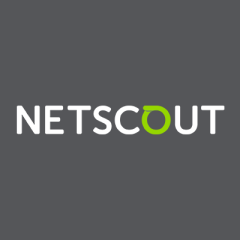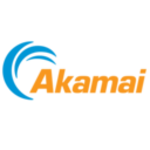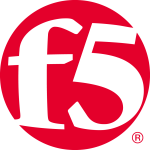What is our primary use case?
We use it to protect websites, usually. But it's hosted in our network, our infrastructure, and the company websites as well. We are an ISP company and we provide internet services and other services to companies, like banks, etc. Part of our services is DDoS protection.
How has it helped my organization?
We are the ISP for government websites here in Saudi Arabia. We had a lot of attacks on those sites. The way we mitigated those attacks was by asking the people who are hosting the website about the features they were using for the websites. They specified two of the ports, and they said we're not going to allow any other port, any other service apart from these two services. We allowed the websites to be accessible through those two ports only. We blocked everything else. This was four years ago and everything has been smooth ever since.
We have a monitoring team here, which is on watch 24/7. The monitoring part is very easy with this solution.
What is most valuable?
Our customers are very happy when we provide them with the interface. We give them read-only privileges and they can review the results by themselves. They can check how many attacks they have faced and how many attacks have been blocked. That is a very valuable feature offered by Arbor DDoS.
We can also give them more privileges. They can do some tweaking according to their own systems. If they have a database running or if they have a website, they can tweak the features themselves.
What needs improvement?
Because we had some routers that were somewhat old, they were not integrated with Arbor. They did not support the NetFlow version that Arbor was running. That was a challenge. We had to upgrade the routers. Some backward-compatibility would be helpful.
For how long have I used the solution?
Three to five years.
What do I think about the stability of the solution?
The deployment is okay, stable. But when you are manipulating the countermeasures, that is the difficult part. You have to be very careful, and you have to be sure that these countermeasures will kick in when needed, that they're going to work.
We have to customize the countermeasures for each customer. That is a real challenge. We should be reviewing them every month. They might be changing their services, they might be using different ports. We have to keep asking our customers, "Okay what are you running now? What are you using now? Which port are you running now?" so that we know what to expect. We need to know which traffic would be legit and which traffic is illegitimate so that we can block the illegitimate traffic without mistakes. We don't want to block the real traffic. There is a feature in Arbor called auto-learning. We can run that and it will help us. But at the end of the day, it's for us to decide what to allow.
You cannot rely on auto because, for example, if you're running auto-learning, and the services have been running on 80, and all of a sudden it switches to 443, it will keep on blocking. You have to expect what's coming. You cannot rely on auto. Human involvement is always necessary.
What do I think about the scalability of the solution?
If the network is expanding, of course, we would expect to need to add more equipment. We would need to expand our solution.
We had two customers from the government which came in, and they are super-important. Their services cannot go down. We had another solution from Arbor called Pravail. We had that installed for those two customers specifically. Their expected traffic is almost 8 MB, and their throughput is 12 MB. Any noise or malformed packets or out-of-sequence packets get filtered by the Pravail Solution. The bigger attacks will be handled by the TMS, the Threat Mitigation System.
Scalability is not a problem for Arbor.
How are customer service and technical support?
Technical support is really good. ATAC has been good with us. We haven't had any problem contacting them or getting them engaged in our activities. For example, sometimes we need to customize the portal banner. For that, they have been helpful.
Which solution did I use previously and why did I switch?
This is our first DDoS solution.
How was the initial setup?
The initial setup is kind of complex because it requires peering. We have to design it from scratch, which makes it a little bit complex. It depends on whether we want to get it inline or if we want to apply offloading, and whether the company can afford a TMS of its own or we need to send traffic to a remote TMS, hosted by Arbor itself.
The last deployment I was involved in took almost a month-and-a-half, with another 15 days for documentation.
It took about eight to 12 people to get the deployment operational. We had people from the core who were engaged with us for the integration and bringing up the systems. After that, we had to hire some fresh resources, because, honestly, it's a new product and it's not very common. We can't really find experienced people for DDoS.
It was not much of a challenge when we were developing it and when we were deploying it because we had a resident engineer who was planning everything, who was leading everything. But after that, when we were mitigating the attacks, there were challenges because we didn't have experienced people over here and the attacks were coming day and night, 24 /7. I had to come to the office after midnight and at midday.
But now, the system stable and the people that I'm managing are more experienced. They know stuff and it's pretty smooth now.
What about the implementation team?
We engaged Arbor itself. We had a resident engineer from Arbor who came here and deployed the system. He was here for a month more for support and for any types of issues that we faced.
What other advice do I have?
Go for it. It's one of the best solutions you can get for DDoS. It doesn't matter what services you're going to use. As long as you have the whole solution, the TMS and everything in-house, it's the best solution.
We have a team of 12 to deploy and monitor the solution; we have three shifts running around the clock. They monitor the system alerts. They monitor the websites using the controls that we have to protect the clients. If one of them catches an attack, there is a high-alert flag and we focus on the attack to see if it has been mitigated or not. If it needs anything, if it needs some tweaking, we have two resources on each watch, a senior resource and a junior. The junior one keeps on monitoring. The senior one comes in whenever there is something to correct or if something needs to be changed in the system.
For ISPs, Arbor DDoS would be the best solution. For smaller organizations, we can buy the services from Amazon for DDoS protection, and there's Cloudflare. But for ISPs, it's better to have Arbor DDoS because we have everything in-house. ISPs like ours have almost 120 gig bandwidth. For throughput, it's the best one.
We don't have plans to increase usage currently because when we brought the solution four years ago, we measured it a lot. We bought more than what we needed. The plan is to improve the human operability on the system itself. Things look smooth, but you cannot rely on two or three people. We have to have redundancy in the human workforce. We're planning to expand the team so that we don't need to hire any fresh resources and train them from the start. These services are very expensive and our customers are expecting a perfect solution.
Disclosure: My company has a business relationship with this vendor other than being a customer. Partner.
















